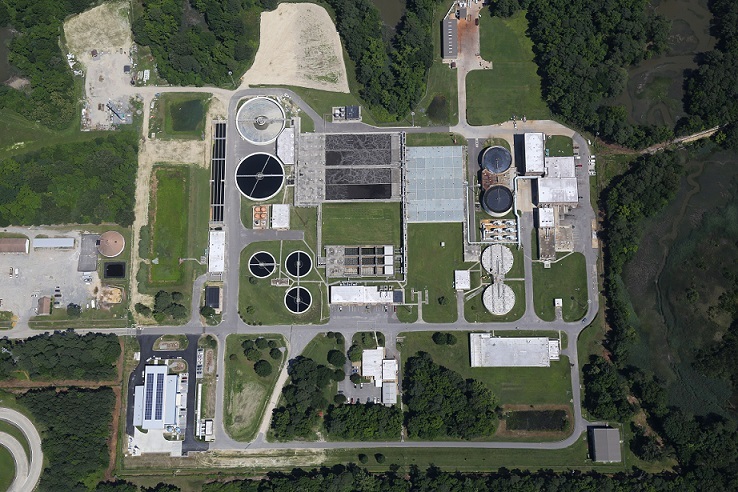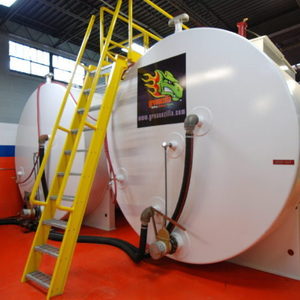Greasezilla FOG separation tech to be installed in SE Virginia



Photo: Greasezilla
December 3, 2019
BY Greasezilla
Greasezilla announced Dec. 3 it has been selected by Hampton Roads Sanitation District to provide the most cost-effective and ecologically sound FOG (fats, oils and grease) separation technology for the Nansemond Treatment Plant in Suffolk, Virginia. HRSD conducted an industry-wide search for the most efficient and advanced system to separate FOG into its basic components, sending the water back to the treatment center headworks and responsibly recovering advanced biofuel feedstock. The construction of the new facility is expected to begin in the spring.
HRSD and the localities it serves are diligently working with responsible restaurant owners to keep FOG out of the regional sewer system. However, some FOG still manages to make its way into the pipes. Over time, this FOG coats, congeals and accumulates in pipes, pumps and equipment, leading to costly and environmentally damaging outcomes. According to the EPA, 23,000 to 75,000 sanitary sewer overflows (SSOs) occur each year, and the majority are caused by FOG. Even if accumulated FOG does not escalate into blockages and SSOs, it can still disrupt wastewater utility facilities by increasing operations and maintenance requirements.
Advertisement
Advertisement
Jacobs, the leading provider of technical, professional and construction services, will be responsible for placement of the major system components and is overseeing the facility, which will screen, decant and process the FOG from indirect haulers. The Greasezilla system will sit ahead of the wastewater treatment facility and process up to 40,000 gallons per day, which equates to 7.5 million gallons of FOG per year and beyond, as it is completely scalable.
Greasezilla’s two-tank, two-boiler system heats the FOG to create separation, requiring no additives, additional processing, blending or fossil fuels. After separation, the brown grease is pumped into holding tanks and may be used as-is to replace No. 6 bunker fuel or as feedstock for biodiesel production. It burns clean and has a small physical footprint compared to other biogenic feedstocks. The remaining water content, which is pasteurized and nearly free of all suspended solids, is now safe for discharge into the wastewater treatment facility.
“We are extremely proud to be working with the Hampton Roads Sanitation District, as it is recognized as one of the most progressive wastewater treatment facility authorities in North America,” said Brian Levine, executive vice president of Greasezilla. “Clean water standards in the United States are changing, and the EPA is now referring to wastewater treatment facilities as ‘utilities of the future.’ With this project, we are starting to see a transformation in the way traditional wastewater utilities view themselves and manage their operations. These changes benefit utilities while also delivering environmental, economic and social benefits to the communities they serve.”
Advertisement
Advertisement
HRSD provides service to 18 cities and counties of southeast Virginia, an area of over 3,087 square miles with a population of 1.7 million (larger than the state of Delaware). HRSD operates nine major treatment plants and seven smaller plants in eastern Virginia, with a combined treatment capacity of 249 million gallons of wastewater from homes and businesses per day.
Greasezilla provides an environmentally sound alternative to chemically treating, lagooning, landfilling, incineration or dumping FOG waste. Greasezilla’s FOG separation process is powered by the same rich brown grease it harvests, making it an economically viable and environmentally sustainable system. Additionally, it only takes 5 percent of the rich brown grease to power the system. This provides a significant economic opportunity to sell the remaining 95 percent of the material.
Greasezilla systems are currently in use in North and South America, with more municipalities planning to add the alternative Greasezilla technology into their wastewater facilities globally.
Related Stories
Saipem has been awarded an EPC contract by Enilive for the expansion of the company’s biorefinery in Porto Marghera, near Venice. The project will boost total nameplate capacity and enable the production of SAF.
Global digital shipbuilder Incat Crowther announced on June 11 the company has been commissioned by Los Angeles operator Catalina Express to design a new low-emission, renewable diesel-powered passenger ferry.
Scientists at ORNL have developed a first-ever method of detecting ribonucleic acid, or RNA, inside plant cells using a technique that results in a visible fluorescent signal. The technology could help develop hardier bioenergy and food crops.
International Air Transport Association has announced the release of the Sustainable Aviation Fuel (SAF) Matchmaker platform, to facilitate SAF procurement between airlines and SAF producers by matching requests for SAF supply with offers.
Alfanar on June 20 officially opened its new office in London, further reaffirming its continued investment in the U.K. The company is developing Lighthouse Green Fuels, a U.K.-based SAF project that is expected to be complete in 2029.
Upcoming Events










